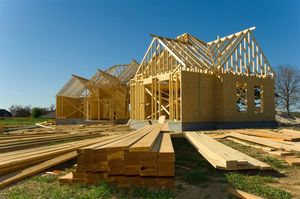
Atlanta, GA – October 14, 2025 – In a move set to reshape the North American timber and wood products landscape, PotlatchDeltic Corporation (NASDAQ: PCH) announced today its definitive agreement to merge with Rayonier Inc. (NYSE: RYN) in an all-stock transaction. The news sent PotlatchDeltic shares soaring, reflecting investor optimism for the creation of a diversified land resources real estate investment trust (REIT) and a formidable player in lumber manufacturing. This strategic consolidation, unanimously approved by both companies' boards, aims to unlock significant synergies and establish a combined entity with an impressive 4.2 million acres of timberland.
The immediate market reaction saw PotlatchDeltic's stock climb by 4.6% in pre-market trading and further by 5% in early hours, driven by the attractive premium offered to its shareholders and the promise of enhanced scale and operational efficiency. Rayonier also experienced a positive, albeit more modest, bump of 1.1% pre-market. The merger is poised to create the second-largest publicly traded timber and wood products company in North America, signaling a new era of consolidation and strategic positioning within the vital housing and construction sectors.
A New Giant Emerges: Unpacking the Merger Details
The landmark merger, publicly announced on October 14, 2025, stems from a definitive agreement executed on October 10, 2025. Structured as an all-stock "merger of equals," the deal values the combined company at an estimated pro forma equity market capitalization of $7.1 billion and a total enterprise value of $8.2 billion, including $1.1 billion of net debt, based on closing stock prices from October 10. PotlatchDeltic shareholders are set to receive 1.7339 common shares of Rayonier for each of their shares, an exchange ratio that implies a price of $44.11 per PotlatchDeltic share—an 8.25% premium over its closing price on October 10, 2025.
Upon closing, Rayonier shareholders are projected to own approximately 54% of the combined entity, with PotlatchDeltic shareholders holding the remaining 46%. The newly formed company, whose name is yet to be revealed, will boast a vast and diversified timberland portfolio encompassing approximately 4.2 million acres across the U.S. South and Pacific Northwest, complemented by seven strategically located wood products manufacturing facilities. This scale is expected to drive considerable operational and corporate cost efficiencies, with management anticipating $40 million in annual run-rate synergies within 24 months post-closing.
Leadership of the combined enterprise will see Rayonier CEO Mark McHugh stepping in as President and CEO, while PotlatchDeltic CEO Eric Cremers will serve as Executive Chair for a transitional two-year period. The new headquarters will be established in Atlanta, Georgia, maintaining significant regional offices in Wildlight, Florida (Rayonier's current base), and Spokane, Washington (PotlatchDeltic's current base). The transaction, which requires regulatory approvals and shareholder votes from both companies, is targeted for completion in late first quarter or early second quarter of 2026. Adding to the financial intricacies, Rayonier declared a one-time special dividend of $1.40 per share, payable in December 2025, stemming from prior taxable gains.
Winners and Losers: Market Repercussions and Company Fortunes
The merger is largely seen as a win for shareholders of both PotlatchDeltic (NASDAQ: PCH) and Rayonier (NYSE: RYN), albeit with differing immediate impacts. PotlatchDeltic shareholders benefit directly from the 8.25% premium on their shares and the opportunity to participate in a larger, more diversified, and potentially more resilient company. The surge in PCH stock following the announcement underscores this positive sentiment, reflecting investor confidence in the value accretion and strategic rationale behind the combination. For Rayonier shareholders, the merger provides an immediate expansion of its asset base and operational footprint, consolidating its position as a timberland REIT leader and enhancing its long-term growth prospects.
The combined entity stands to gain significantly from increased scale, which can lead to greater operational efficiencies, enhanced purchasing power, and a more robust market presence. The diversification of timberland assets across different geographies (U.S. South and Pacific Northwest) also mitigates regional risks and offers a more balanced exposure to various timber markets and end-use sectors. This strategic positioning could allow the new company to better navigate the cyclical nature of the housing and construction industries, providing a more stable revenue stream and potentially higher returns for investors in the long run.
While the immediate impact on competitors might be limited, the creation of such a large player could intensify competition in certain regional markets, potentially putting pressure on smaller, less diversified timberland owners and wood product manufacturers. Companies like Weyerhaeuser (NYSE: WY), currently the largest timberland REIT, will face a stronger number two competitor, which could spur further consolidation or strategic adjustments within the sector. However, the overall health of the housing market and demand for wood products will remain the primary drivers for all players in the industry.
Broader Implications: Reshaping the Timber and Wood Products Landscape
This merger is a clear indicator of a broader trend towards consolidation within the timberland and wood products industry, driven by the pursuit of scale, efficiency, and diversification. As timberland REITs continue to mature, strategic combinations like this allow companies to optimize their asset portfolios, reduce operating costs, and enhance their ability to respond to market fluctuations. The combined company's extensive timberland holdings and integrated wood products manufacturing facilities will offer a comprehensive solution from forest to finished product, potentially stabilizing supply chains at a time when the housing and construction sectors are grappling with economic uncertainties.
The ripple effects could extend beyond direct competitors. Enhanced efficiency in timber management and lumber production by a larger, more integrated entity could influence pricing dynamics and supply stability for builders and developers. Furthermore, the combined company's increased capacity and strategic positioning in key timber-producing regions might set new benchmarks for sustainability practices and land resource management, potentially influencing industry-wide standards and regulatory discussions surrounding environmental stewardship and natural climate solutions.
Historically, periods of market consolidation in resource-intensive industries often lead to increased market power for the dominant players. While this merger is unlikely to trigger immediate antitrust concerns given the fragmented nature of the broader timber market, regulators will undoubtedly scrutinize the transaction to ensure fair competition. This event echoes past consolidations in other REIT sectors, where increased scale often leads to improved access to capital markets and a stronger ability to invest in technological advancements and sustainable forestry practices.
The Road Ahead: Navigating Future Opportunities and Challenges
In the short term, investors will be closely watching the progress of regulatory approvals and shareholder votes, as these are critical hurdles for the transaction to close as anticipated in early 2026. Any delays or unexpected conditions could introduce volatility into the stocks of both PotlatchDeltic (NASDAQ: PCH) and Rayonier (NYSE: RYN). The integration process itself will be a significant undertaking, and the market will be keen to see how smoothly the two companies merge their operations, cultures, and management teams to realize the projected $40 million in annual synergies.
Looking further ahead, the combined entity will face both significant opportunities and challenges. The increased scale and diversified asset base position it well to capitalize on long-term trends such as sustainable forestry, carbon sequestration markets, and continued demand for wood products in residential construction. The ability to leverage complementary assets and expertise, particularly in land-based and natural climate solutions, could open new revenue streams and enhance the company's environmental, social, and governance (ESG) profile. However, the company will need to deftly navigate potential strategic pivots, adapting to evolving housing market dynamics, fluctuating lumber prices, and the ongoing need for capital investment in its timberland and manufacturing facilities.
Potential scenarios range from a highly successful integration that delivers robust shareholder value through maximized synergies and market leadership, to a more challenging process hampered by unforeseen operational complexities or a downturn in the housing market. The market opportunities are substantial, particularly if the combined company can effectively optimize its vast timberland portfolio for both timber production and higher-and-better-use land sales. Conversely, challenges such as rising interest rates, labor shortages, or increased regulatory scrutiny could impact profitability and growth.
A New Chapter for Timber: A Comprehensive Wrap-up
The merger of PotlatchDeltic and Rayonier marks a pivotal moment for the North American timber and wood products industry. The creation of a combined entity with an impressive 4.2 million acres of timberland and significant lumber manufacturing capabilities signifies a clear strategic shift towards consolidation, aimed at achieving greater scale, efficiency, and market resilience. The immediate surge in PotlatchDeltic's stock underscores the market's positive reception to the premium offered and the long-term value proposition of the integrated business.
Moving forward, the market will assess the new company's ability to successfully integrate operations, realize projected synergies, and adapt to the dynamic economic landscape. This strategic move is not just about combining assets; it's about forging a more robust and diversified leader capable of navigating the complexities of modern forestry, sustainable resource management, and the ever-present demands of the construction sector. Investors should closely monitor the integration process, the realization of synergy targets, and the broader trends in housing starts and lumber demand, as these will be key indicators of the combined company's future performance.
Ultimately, this merger represents a significant bet on the enduring value of timberland and the strategic advantages of an integrated business model. It sets a new benchmark for scale in the timber REIT space and could catalyze further strategic realignments within the industry. The lasting impact will be measured not only in financial returns but also in the combined entity's ability to drive innovation, promote sustainable practices, and contribute to the vital infrastructure of the North American economy.
This content is intended for informational purposes only and is not financial advice





